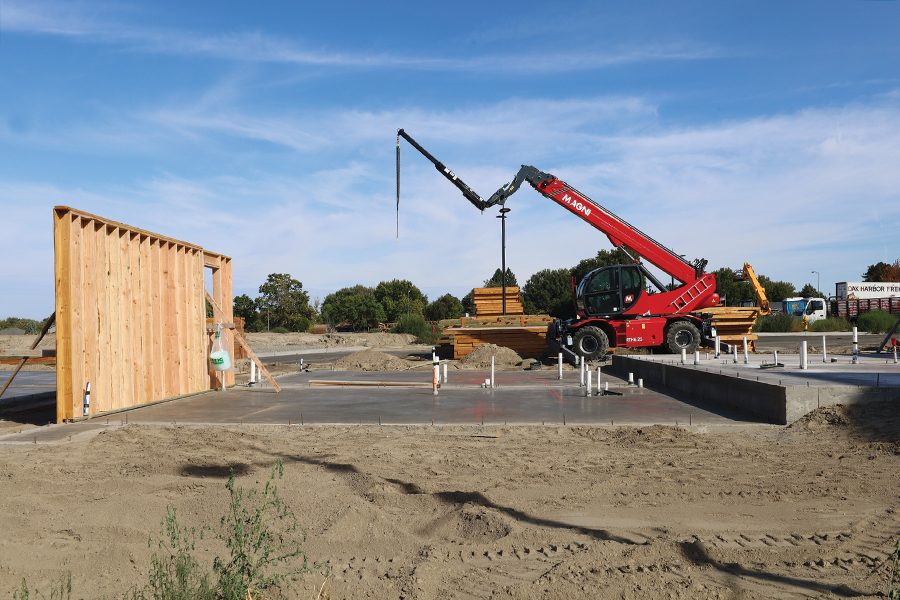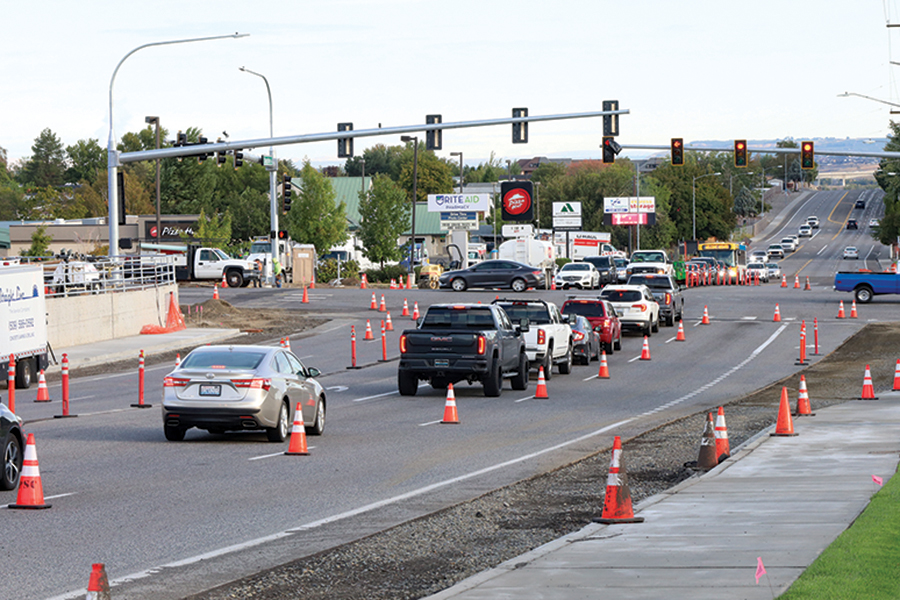
Home » City of Kennewick: New housing, commercial projects fuel demand for services
City of Kennewick: New housing, commercial projects fuel demand for services

October 11, 2023
Steady population growth fuels the need for steady infrastructure expansion as new housing, retail and commercial developments follow the influx of new residents to the Tri-Cities’ largest city.
The latest population estimate shows Kennewick up more than 1,100 residents, or 1.3%, over last year with a total population of 86,470, making it the 15th largest city in the state.
While single-family construction has dropped region-wide, Kennewick issued 50.7% more building permits for single-family homes through August 2023 compared to the same period the previous year. The city hasn’t seen that kind of home construction growth in this same period since 2019.
And more homes are coming.
Plans are underway to develop Urban Trails, a planned residential development by Mitchell Creer LLC on the south side of Bob Olson Parkway at Wheat Road near Desert Hills Middle School. The developer proposes 1,333 multifamily homes, 445 townhomes, 100 large single-family homes and commercial buildings on 152 acres over the next five to 10 years. Plans for the project were submitted in September 2023 for review under the state’s Environmental Policy Act (SEPA).
The $200 million Resort at Hansen Park, bordered by Columbia Center Boulevard and West 10th Avenue, is still under construction. At full build-out in 2025, it will feature a total of 10 properties, 605 apartment units, 97,000 square feet of commercial space, an apart-hotel and a 23,000-square-foot clubhouse with pools and recreational facilities.
A mixed-use development under construction in the Southridge area of Kennewick called The Falls on 24th will offer 107 residential units and street-front commercial space. It’s at the corner of 24th Avenue and South Quillan Place, near WindSong at Southridge Memory Care. The first phase of the project is expected to be completed next summer.
This past year saw the start of several projects across the city to improve existing infrastructure and add more public amenities.
“There’s a lot of forward thinking and planning that goes into looking at infrastructure and how it’s going to support the growth of the community. But even more important is ensuring that we can continue to grow and keep the maintenance up for the infrastructure we already have, but also for the (future) growth,” said Evelyn Lusignan, city of Kennewick’s public relations and government affairs director.
The city of Kennewick manages a $503.4 million budget, with a $112 million capital projects budget making up about 22% of its total adjusted budget.
About $66 million of the capital budget comes from utility funds, including water and sewer.
Road projects
Two major intersection improvements were underway in fall 2023 to alleviate traffic construction on the west side of the city.
Work began in April 2023 on the Steptoe Street and Gage Boulevard intersection, which will add double left turn lanes, double through lanes and right turn lanes at all approaches to the city’s busiest intersection.
The city of Kennewick estimates more than 85,000 vehicles pass through the intersection each day – roughly the population of the city itself.
“(The) project will increase safety, capacity and functionality,” Lusignan said.
The $3.8 million project, which includes design, engineering and right of way acquisition, also involves widening all the corners to accommodate the new lanes, a new traffic signal and new streetscaping.
The project is expected to be completed by January 2024.

Work also has started at Deschutes Avenue and Columbia Center Boulevard in preparation for the future addition of a third lane in each direction on Columbia Center north of the Deschutes intersection to Quinault Avenue.
This first phase includes a new traffic signal system to accommodate a new right turn lane for westbound traffic turning northbound. Then a roundabout will be installed at Colorado Street and Deschutes.
The $2.9 million project is expected to wrap up in late March or early April 2024.
Utilities above and below
The replacement of Fire Station 1 and administrative facility off 10th Avenue, between Dayton Street and Auburn Street, a $10.4 million project, was nearly complete in September 2023.
The new station replaces its predecessor at 600 S. Auburn St., which originally opened in 1977.
Lusignan said the old building will no longer be used by the fire department and will be incorporated into a future “civic campus” master plan, which will include replacement of the aging city hall.
Meanwhile, below ground, the city of Kennewick is closing in on the completion of the first phase of it its advanced metering infrastructure (AMI) project, which will replace or retrofit all water meters across the city with remote read technology that reports usage in real time to both the city and customers.
“This will be important for conservation efforts,” said Lusignan, who added that vigilant customers will also be able to detect problems sooner in the case of water leaks or meter equipment malfunctions.
So far, some 14,000 meters have been upgraded, she said, with the second phase beginning soon.
Plans are still moving forward on a cutting-edge transformation of the city’s aging wastewater treatment plant into a grade A fertilizer-producing greenhouse facility, which will generate new revenue for the city from the sewage waste it collects, processes and expects to sell.
Dredging of the plant’s two lagoons is underway in preparation for construction, set to begin in spring 2024.
“Our utility workers are the unsung heroes,” Lusignan said. “There is nothing more vital to the community than clean water and that when you flush it, it goes away. There is so much hard work that goes on behind the scenes to ensure that everything is handled properly.”
The infrastructure below the ground is easy to overlook, “but a significant amount of investment goes into those services. They are top priorities for the city,” Lusignan said.
Pickleball capital
One of the city’s most eagerly awaited projects of 2023 was the completion of a $1.3 million pickleball complex at Lawrence Scott Park at Canal Drive and Kellogg Street.
The park was previously home to three pickleball courts, but the expansion added an additional 12 championship-quality courts, as well as a 74-by-45-foot picnic shelter pavilion and new restrooms.
“This complex makes Kennewick the pickleball capital of the state,” Lusignan said.
With 15 courts, Lawrence Scott is now the largest outdoor pickleball complex in Washington, the birthplace of pickleball, and now the state’s official sport, Lusignan said. For comparison, Spokane’s largest complex features 10 courts and Seattle has eight.
The project was completed in partnership with Club 509 Pickleball, which proposed the idea to the city and helped recruit Toyota of Tri-Cities and Retter & Co. Sotheby’s International Realty as sponsors.
Lusignan said that not only does the new complex provide more resources for the growing community of pickleball players in Tri-Cities, but it also opens the door to new economic development opportunities as the city can now host tournaments and other big events.
Lusignan said the new complex also enhances the overall quality of life in Kennewick.
“We are making investment in all aspects, whether it’s infrastructure to support growth or investing in amenities like pickleball courts to make the city a great place to live. New recreation opportunities that provide some diverse options for all ages help when marketing to visitors and new businesses. When businesses look to locate here, they’re not just looking at growth, but asking, ‘Is this a place people want to raise a family?’ They have to be able to retain employees,” she said.
Construction + Real Estate
KEYWORDS october 2023





